Is an icon painted, or “written”? That may seem an odd question, because as any sensible person can see, icons are painted; they are paint applied to a surface of some kind. Why, then, does such a question even arise?
The answer lies in the usage by many English-speaking neo-Eastern Orthodox of a kind of affected jargon in referring to icons. They will say one “writes” an icon rather than “paints” it. But the reason for that peculiar usage lies in the differences between the English and the Russian languages.
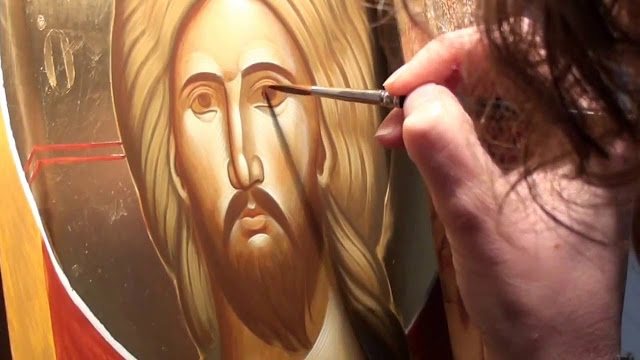
Ask a Russian how one says “write,” in his language, and he will answer “pisat’.” Then ask him how one says “paint,” and he will reply “pisat’.” That is because Russian has one word with a double meaning, and one must know the context to know whether one is writing a letter or painting a picture. English, however, has distinct words for these two actions. We “write” a letter, but we “paint” a picture. So to say one “writes” an icon in English is a poor use of language and it is inaccurate English.
Tell this to your neighborhood convert to Eastern Orthodoxy (if you even have one, and remember there is no zeal like the zeal of a convert), and he or she may likely tell you, “But an icon is the Gospel in paint, and a Gospel is written, so we Orthodox say we ‘write’ an icon.”
Well, he or she may certainly say it, but it is not correct. Nor do all Orthodox say it — in fact fewer and fewer maker that mistake. The reasons given for this mistaken usage among icon enthusiasts are the linguistic equivalent of an urban legend. The true reason is simple: In Russian you can “write/paint” an icon, and you can “write/paint” a copy of the Mona Lisa, but in English, if you are creating an image with paint, you are painting it. All else is simply affected nonsense. And as for “we Orthodox,” well, time has finally caught up with this strange notion, and a great many “Orthodox” now are quite aware that to say “write” in English when one should say “paint” is an “immigrant English” error one should have learned to correct by now.
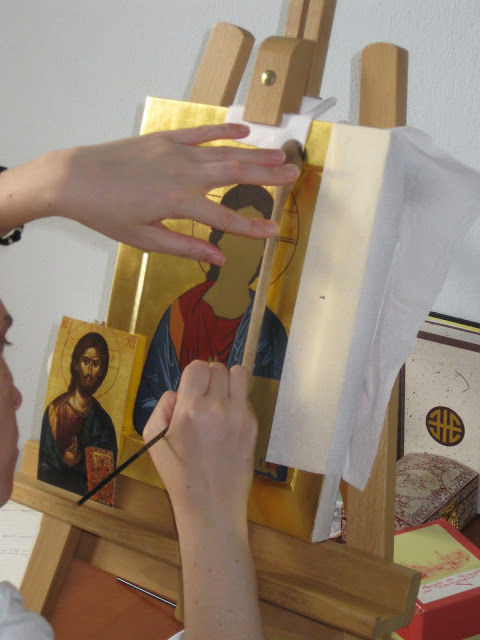
But what about those who call themselves iconographers instead of “icon painters”? An icon (eikon) is an image in Greek; graphein in Greek means to write; but here again, it can also mean to paint — so we find ourselves in the same situation as in the Russian language. An iconographer, then, is one who “paints/writes” an image/icon according to the Greek root words, but of course in English we would always say that an iconographer paints an icon, because that is correct English. Now, one can correctly say “iconographer” in English, because the word has long been adopted into English, as have many words of Greek or Latin origin. A photographer does not “write light” in English. He photographs, or “takes a photo/picture.” Iconographer is simply a Greek-rooted English synonym for “icon painter.” But “write” in English is not a synonym for “paint.”

Of course if you happen to be Russian, or are speaking of the subject in Russian, it is perfectly correct to say pisat’ in regard to icons. But when translating into English, the correct translation is to “paint” icons, not to “write” them.
Icons Are Not “Written”
We’ve all heard, and many of us have used, the currently popular phrase “icon writing.” Whoever invented this expression must have noticed that in the Greek word eikonographia and its Slavonic translation ikonopisanie the suffixes (graphí and pisánie) very often mean “writing.” Our inventor thereupon thought it a good idea to speak of “icon writing,” probably imagining that the sheer oddness of the phrase would attract more attention than the prosaic “icon painting”and also convey a greater sense of the sacredness of the act of producing an icon. Ever since, this tortured translation has stuck to the lips of just about every English-speaking Orthodox Christian who talks about icons.
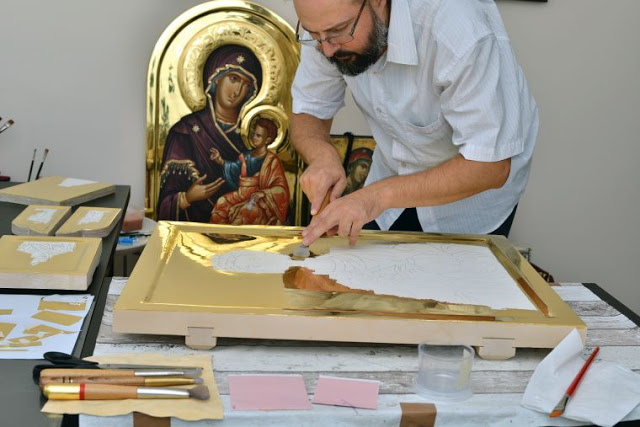
However, the suffixes graphí and pisánie both mean depiction, as well as writing. The first–more to the point here than the Slavonic term, which was formed on the basis of the Greek–is related to the verb gráphein/grápho and means any representational delineation — such as when you write the letters of an alphabet, but also when you sketch, say, a portrait. The precise translation depends on the circumstances. For example, “geography” does not mean “earth writing,” but earth description, whether verbal or pictorial. “Scenography,” from the word skiní, meaning a shelter, by implication a tent, and by further implication one of canvas, means the painting or other illustration of a backdrop, on canvas or similar material, for a theatrical production (whence our words “scene”and “scenic”); it does not mean “scene writing.” Whether the delineation referred to is verbal or pictorial, graphí implies circumscription, as when the Church says that God the Father is aperigraptos. That does not mean, obviously, that God the Father is “unwritable.” It means He is uncircumscribable, unbounded, undepictable, incomprehensible, unsusceptible to containment within the boundaries that we must impose on anything before we can comprehend or speak of it.

The habit of describing icons as “written” should therefore be dropped. Not only does the expression do violence to English and sound just plain silly, but it can introduce notions without basis in the Greek texts — such as, that an icon is essentially a representation of words, as opposed to a representation of things that words represent.
The theologically important fact that icons, which are pictorial, and Scripture, which is verbal, are nearly equivalent can be conveyed in other ways than by torturing English. It’s worth noting that in the Acts of the Seventh Ecumenical Council, the Greek word used for an icon painter is simply zográphos (in Slavonic, zhivopísets), meaning simply a depicter of life, or of forms taken from life: that the subjects depicted were religious was more or less assumed. It seems that when secular artists eventually gained higher social status than before, and zográphos could apply to them as well as to the makers of sacred representations, the term was superseded in Greek by the more specific agiográphos, or eikonográphos (in Slavonic, ikonopísets).
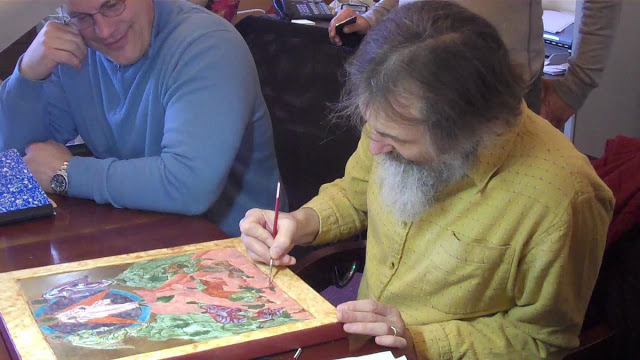
An icon is painted, pure and simple, or produced by some other technique, if made of enamel or ivory or whatever else. But it is not written, and never in the Church’s history until our day, no matter what the language used, has the Church said or implied that an icon is written. Let’s hope it isn’t too late to expunge the expression.

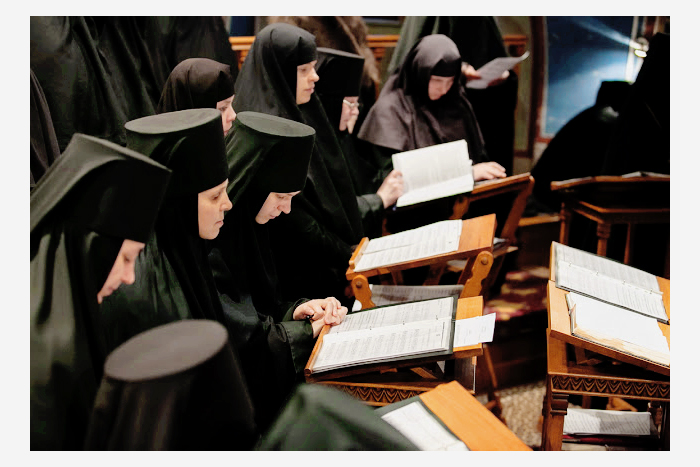
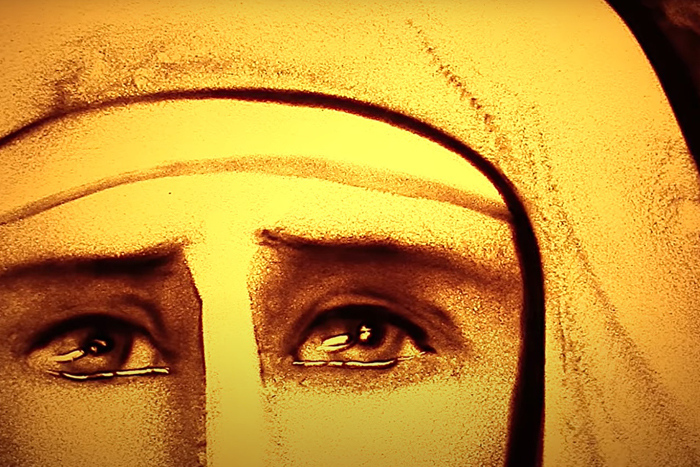

That’s the most sensible and clearest thing I’ve seen on this issue.
A better and more reverent word is hagiography. So one can say
The icon of Saint Chryssa is an hagiography. Or the work written to describe the life of a saint is an hagiography.
Or
Hagiographic art
Or
hagiographical icons
Those who use only English have no excuse. Paint is not the correct word to describe such a holy experience. English users need to learn the correct way to describe this sacred work.